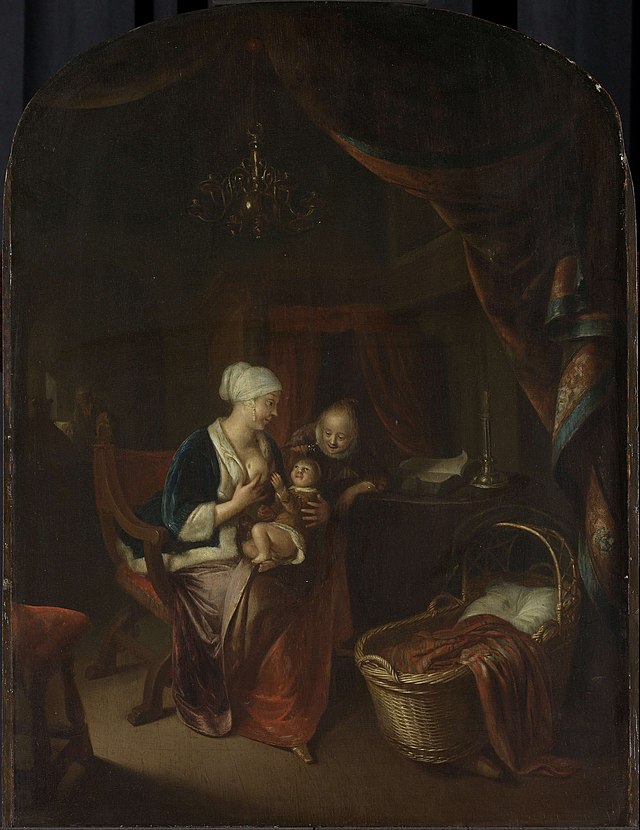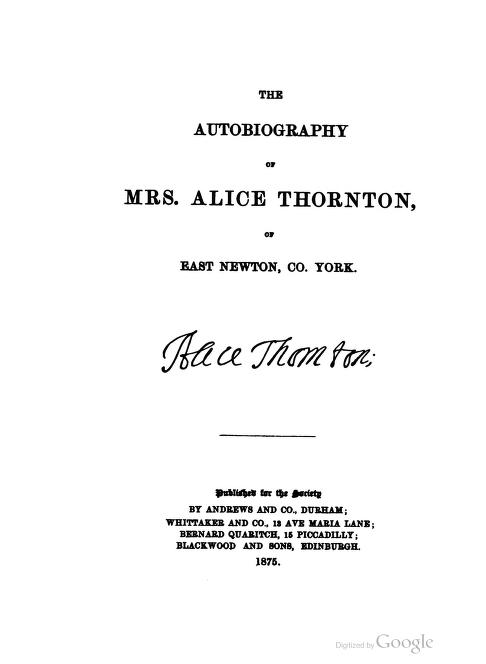Women’s History Month 2023, 4: Time Matters
For Women’s History Month 2023, we have been posting a series of reflections on our first encounters with Alice Thornton and our changing relationship with her books from then to now. Feel free to get involved by sending us your own reflections, on Twitter or on Facebook.
Fourth in the series is Professor Susan Amussen, a social and cultural historian of early modern Britain based at University of California Merced, who first encountered Thornton's writings in 1977.
In the spring of 1977, in my second semester as a graduate student, I set out to read as many primary sources written by 16th and 17th century women as I could. My advisor, David Underdown, wanted me to demonstrate that there was material to work with for a dissertation on early modern English women. I was in the US, so I read printed sources published in various series from the mid-nineteenth century on. Diaries, letters, memoirs, histories: I read widely. I knew that the sources I was reading had been edited, and I could guess some of what might be missing, but I was never sure. Still, some of these sources were particularly revealing, and I was grateful to their writers.

Needless to say, one of the women whose writings I read was Alice Thornton. In the paper I wrote, I cited both her anxieties about childbirth and her legal difficulties. While my research after that initial paper moved away from gentry women, many of the women whose writings I had read that year remained with me. What I remembered most about Thornton were her anxieties about childbirth, and I have quoted them at various times as evidence that women knew that childbirth was likely to be difficult. I thought Thornton was somewhat feeble. I did not fully grasp the context of her legal difficulties; what I noticed was that Thornton’s mother had worked hard to ensure that Alice’s property was protected, and that Alice herself felt helpless in dealing with her husband’s estate. I saw Thornton as evidence that gentry women were not as competent in the later 17th century as they had been in the earlier period.
After all these years, I am focusing more directly on the big questions that have always animated my work. Recently I had idly considered that in the future I should return to the elite women I last studied in 1977. Now, of course, we know of the writings of many more women, and we have a much sturdier sense of the context in which they wrote. I would no longer be dependent on 19th century editors. It was serendipitous last spring that I heard Cordelia Beattie speak about the Alice Thornton’s Books project. There I learned not only the amazing story of the discovery of all four books, but also gained an appreciation of the different goals of the books, as well as a fuller understanding of the context of Thornton’s life.
So, how has my thinking about Alice Thornton changed? Well, first, at the time I first encountered Thornton, there was almost no recent scholarship on early modern women. Re-reading the paper I wrote after 40 years is a bit embarrassing, and I’m the only one who will read it! The whole analytical structure I imposed on Thornton and on the other gentry women whose work I read was wrong. I was desperate to connect what I was reading to existing historiography, and I worked far too hard at it! Now we know more not just about Alice Thornton and her books, but also women and writing women in early modern England more generally.

More importantly, the edition of Thornton I read was offered as her “autobiography”, as if it were a coherent structured narrative. It was not, and it obscured the rhetorical goals that drove Thornton in each of her books. Back then I thought about each topic as a separate problem; I did not fully grasp the ways different aspects of one's life affect each other. Thinking now about how she feared childbirth, I can see how her difficult relationship with her husband shaped her anxieties: would he support the children? I see her less as feeble, and more as hobbled by the combination of legal rules and her husband’s lies and improvident behaviour. Her legal struggles were as much systematic as individual; insofar as they were individual, they were shaped by her husband’s actions, not her competence. Were I to write that same paper today, it would be much more clearly shaped by the structures in which Thornton and other women lived.
All of this is to say that as we learn more, we rethink what we first thought we knew. The forthcoming digital edition of Thornton’s books, attentive to their place in her life, has given me the opportunity to think about how context shapes experience. But there is something else. As I have got older, I think in new ways about time, and about the importance or relevance of what I experienced in the past. Thornton’s books allow us to see one woman considering her life at different times. And, as historians know, time matters.
Citing this web page:
Susan Amussen. 'Women’s History Month 2023, 4: Time Matters'. Alice Thornton's Books. Accessed .https://thornton.kdl.kcl.ac.uk/posts/blog/2023-03-30-WHM-amussen-thornton/